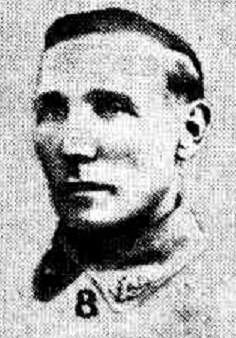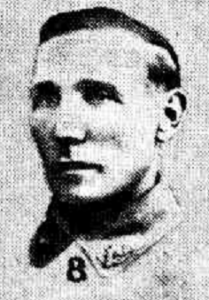George Murray was born in Orange in 1873, the youngest of eleven children born to John Murray and Susan Mary nee Liscombe of Athol Farm, Manildra. John was aged 57 at the time and was a storekeeper in Molong.
In October 1899 George enrolled in the NSW Mounted Rifles and proceeded to South Africa to serve in the Boer War. During his service George was hit in the mouth by a bullet. He sustained a broken jaw and lost four teeth.
Prior to the First World War George led teams of horses between Forbes and Penrith, a trip that took him six weeks.
On 14 July 1915 George, aged 42, enlisted in WWI. He was assigned to the 12th Light Horse Regiment, 4th Reinforcement as a private. He embarked from Sydney on 4 March 1916 and served in Egypt and Palestine. In July 1916 he was promoted to Lance Corporal and, in May 1918, to Sergeant.
George’s father, John, died in Molong on 23 July 1916, at the age of 101. George was serving in Egypt at the time and wrote a letter to his mother, Susan, saying:
I was pleased to hear that father’s end was so peaceful. He was a wonderful age, few pass the hundred mark.
Unfortunately Susan passed away before she received the letter; she died on 9 November 1916, aged 85.
On 25 September 1918 Sergeant Murray’s regiment was engaged in the advance on Semakh in Palestine. At a distance of 100 yards (91 metres) Murray fearlessly confronted the enemy with three machine guns. He was subsequently recommended for the Distinguished Conduct Medal. The recommendation stated:
This NCO has proved all through the operation most reliable and has given the greatest possible assistance to his officers. He is always unselfish in his devotion to the service.
Although recommended for the Distinguished Conduct Medal, Murray was awarded the Military Medal for conspicuous service rendered on 27 December 1918.
In November 1918 Sergeant Murray was admitted to hospital in Tripoli, suffering from pyrexia (fever). Following his recovery George requested compassionate leave, stating:
On leaving home three years ago I left a farming and grazing property occupied by my mother and father both of whom have since died. The share farmer who worked my land has enlisted in the AIF. My brother who watched my interests has undergone an operation which leaves him as an invalid. For the above reasons both family and business I want to get home to rearrange my affairs.
George’s leave was granted and he was discharged from the AIF in April 1919.
In March 1919 George was officially welcomed home in Manildra, where he was presented with his Military Medal by the Member for Calare, Henry Robert Maguire Piggott.
George never married. He sold his Athol Farm in early 1924 and relocated to Wentworthville, where he remained until his death on 29 January 1961, aged 88.
George Murray is commemorated on Manildra Soldiers Memorial Hall Honour Roll, the Cudal District Honour Roll, the Cudal and District War Memorial Gates, the Toogong War Memorial and the Molong Boer War Memorial.
Many other members of the extended Murray clan in the Central West served during WWI, including George’s nephews George Wren Murray, Sage Clyne Sinclair Murray and Walter Stewart Murray, and his cousin, Hugh Miller Murray.


